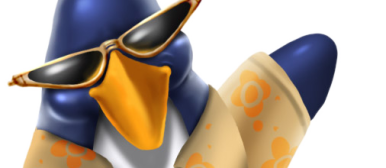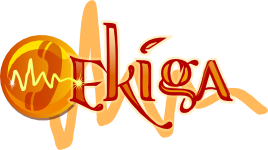Documentation
To get the PDF version, click here
FAQ
PDF Download
To get the PDF version, click here.
Read it online
- Table of Contents
- 1. General
- 1.1. About Ekiga
- 1.1.1. What is Ekiga?
- 1.1.2. Is it Free Software?
- 1.1.3. What is the License?
- 1.1.4. What is it compatible with?
- 1.1.5. What are the minimum requirements?
- 1.2. People
- 1.3. How can I contribute translations?
- 2. Ekiga Features
- 2.1. What are the Ekiga features?
- 2.2. Is there a manual?
- 2.3. Does it work under KDE?
- 2.4. You are talking about SIP and H.323. I do not know what it is, which one should I choose?
- 2.5. Is it possible to do PC-To-Phone calls using Ekiga?
- 2.6. Does it support Text Chat?
- 2.7. What is a SIP address and how can I get one?
- 2.8. How can I test if it is working?
- 2.9. Does it support NAT?
- 2.10. What is ENUM support?
- 2.11. What is Rendez-Vous support?
- 3. Hardware compatibility
- 4. Software installation
- 5. Using Ekiga to do PC-To-Phone calls
- 6. Getting it to work behind a NAT router
- 7. Troubleshooting
- 7.1. Video problems
- 7.1.1. My webcam doesn't work with Ekiga, what can I do?
- 7.1.2. Ekiga only displays a part of the real picture in the video window, what can I do?
- 7.1.3. I can see people, but they do not see me
- 7.1.4. People can see me, but I can't see them
- 7.1.5. I have no webcam, can I send a picture to the remote client?
- 7.2. Audio problems
- 7.3. SDL fullscreen is not of very good quality, is it normal?
- 7.4. I have GConf errors when I start Ekiga, what can I do?
- 7.5. Ekiga is crashing all the time, is it normal?
1. General
1.1. About Ekiga
1.1.1. What is Ekiga?
Ekiga is a SIP and H.323 compatible VoIP, IP Telephony, and Video Conferencing application that allows you to make audio and video calls to remote users with SIP or H.323 hardware and software. It supports all modern VoIP features for both SIP and H.323. Ekiga is the first Open Source application to support both H.323 and SIP, as well as audio and video. Ekiga was formerly known as GnomeMeeting.
1.1.2. Is it Free Software?
Yes, it is free as in free speech and in free beer. It is licensed under the GNU/GPL.
1.1.3. What is the License?
Ekiga is licensed under the GPL license and as a special exception, you have permission to link or otherwise combine this program with the programs OPAL, OpenH323 and PWLIB, and distribute the combination, without applying the requirements of the GNU GPL to the OPAL, OpenH323 and PWLIB programs, as long as you do follow the requirements of the GNU GPL for all the rest of the software thus combined.
1.1.4. What is it compatible with?
Ekiga is compatible with any software, device or router supporting SIP or H.323. It includes SwissVoice, CISCO, SNOM, ... IP Phones, but also software like Windows Messenger, Netmeeting, SJPhone, Eyebeam, X-Lite, ... or also the Asterisk popular IPBX, as well as any other commercial or Open Source IPBX. Ekiga is not compatible with Skype and will never be as long as their protocol will stay proprietary. We do not think using closed protocols for communications is a good thing.
1.1.5. What are the minimum requirements?
You need :
A correctly configured firewall and NAT router/gateway (see this FAQ for more information).
You don't need a webcam. Ekiga is primarily VoIP software.
Having a headset is recommended if you want to prevent echo. However, a webcam with an internal microphone or a separate microphone will also work.
1.2. People
1.2.1. Who created it?
The creator of the project, Damien Sandras <dsandras_at_seconix.com>, initiated the project on December 25, 2000, as a master thesis at the "Universit� Catholique de Louvain" in Belgium (http://www.ucl.ac.be).
1.2.2. Who drew the the logo and made the graphic art?
Andreas Kwiatkowski. You can visit his website at: http://www.kwiat.org
1.2.3. Who drew the the mascot?
Carlos Pardo. The mascot is named Lumi. You can visit Carlos' website at: http://www.m4de.com
1.2.4. Who designed the website?
The code of the new website was written by Fabian Deutsch. The design of the website was created by Fabian Deutsch. The graphic art was done by Andreas Kwiatkowski. The old websites until now were done by C�dric Valcke.
1.2.5. Who designed the icon and the logo for Ekiga?
The graphic art has been done by Andreas Kwiatkowski.
1.3. How can I contribute translations?
Ekiga is using the GNOME Translation Project (or GTP for short) for translations. The GTP web page is at http://developer.gnome.org/projects/gtp/.
The GTP is a large team of volunteering translators (probably a lot like you) that translate the GNOME applications that they like into their native language. The GTP is divided into many language teams, all with their own team coordinator, and some with their own mailing list and website. To help us with Ekiga translations, we'd really like you to join the GTP and join your respective language team. Joining is easy, what it takes is more or less just subscribing to some mailing lists. More on that below.
There are a lot of reasons why we want you to do this. First of all, you will not be required to translate anything - it's all up to you, even if you join the GTP. Second, it would be a waste of time if someone had done duplicate work - there might already be someone working on a Ekiga translation for your language, but there's no way to know until you have contacted your language team and asked if someone is already working on a translation. Third, your translation team has people who probably have translated a lot of applications into your language before, and they can usually help you with any translation question (technical or linguistic) that you might have. Fourth, every translation team usually has at least one person with access to the GNOME CVS repository (where Ekiga development takes place), and he/she can commit your finished translation directly into this CVS repository.
Intructions on how to join the GTP are on the GTP web site, mentioned above.
| Next | ||
| Ekiga Features |



